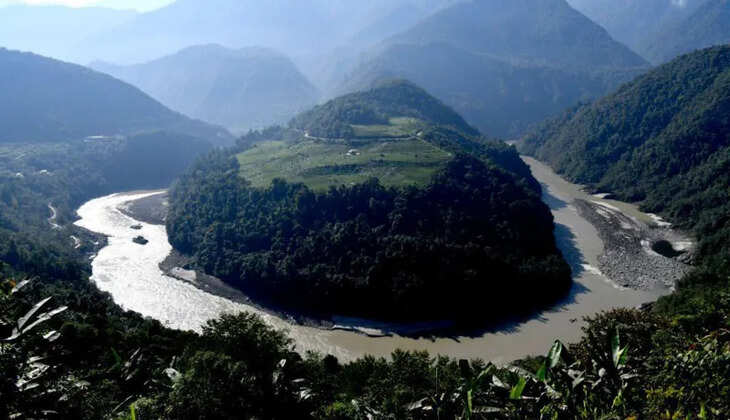China Approves World's Largest Hydropower Dam on Tibet’s Yarlung Tsangpo River

China formally approved the building of what would become the biggest hydropower dam in the world in a daring step to increase its capacity for renewable energy. Situated in Tibet on the Yarlung Tsangpo River, this massive project is poised to transform the world energy scene. Once finished, it will not only provide a lot of power but also be among the most difficult engineering achievements ever done.
This large hydropower facility will be located on the Yarlung Tsangpo River, which is well-known for passing the most extreme canyon on Earth. One amazing geological aspect of the canyon is its 7,667-meter vertical drop—about 25,154 feet. This makes the project interesting and demanding since the dam will be constructed in an area with special and occasionally dangerous geological circumstances.
One cannot really overestimate the scope of the project. Estimated to cost one trillion yuan (about US$137 billion), this will be China's biggest infrastructure project ever started. The dam is supposed to generate around 300 billion kilowatt-hours (kWh) of yearly power. Stated differently, this level of power could provide electricity to around 300 million people. That is practically the whole US population!
Long a pillar of China's renewable energy initiatives, hydropower now takes that dedication to a whole fresh degree with this project. Apart from being consumed locally, the generated electricity might help China rely less on fossil fuels, therefore complementing world objectives for more environmentally friendly energy sources. The enormous size of the dam also implies that it will have a major effect on China's energy grid, offering a consistent, renewable power supply to assist meet the nation's rising energy needs.
The dam's location, at the foot of the Tibetan Plateau and close to a tectonic plate border, presents certain difficulties, nevertheless. The area's seismic activity is well-known and might cause major hazards during operation and building. Given that the area rests on the boundary of the Indian and Eurasian tectonic plates, earthquakes are a main issue. Engineers would thus have to build the dam and its infrastructure to resist possible earthquakes and other natural calamities.
Apart from the seismic hazards, the particular geology of the area implies that the building procedure will be somewhat difficult. The high altitude, steep terrain, and remote location provide logistical challenges that will call both careful preparation and creative thinking. Getting workers and supplies to the location will be somewhat tough because the area is hard to reach by conventional ways. However, considering China's past performance with major infrastructure projects as the Qinghai-Tibet Railway and the Three Gorges Dam, there is hope that these challenges can be surmounted.
Additionally predicted to have a notable social and environmental impact is the Yarlung Tsangpo Dam. Although the project would give China's green energy initiatives a much-needed boost, big hydropower projects are sometimes criticised for their environmental consequences, which include disturbance of local ecosystems and residents. Although the government has promised to do extensive environmental studies and guarantee that the project satisfies global criteria for sustainability, issues regarding the possible displacement of local population and the long-term ecological effects still exist.
Like every sizable infrastructure project, there will be proponents and detractors. The dam will help China lessen its reliance on coal and represent a significant step towards its targets of carbon neutrality by 2060. Critics counter that the region's seismic activity, environmental damage, and effect on Tibet's distinctive cultural and ecological legacy create possible risks.
Still, the approval of the Yarlung Tsangpo Dam marks a historic change in China's energy policy. Should it be successful, it will not only mark a new hydropower generating record but also demonstrate China's capacity for mega-projects in some of the most difficult surroundings worldwide. Now, when building on what promises to be an amazing engineering feat starts, the eyes of the world will be observing.
--
